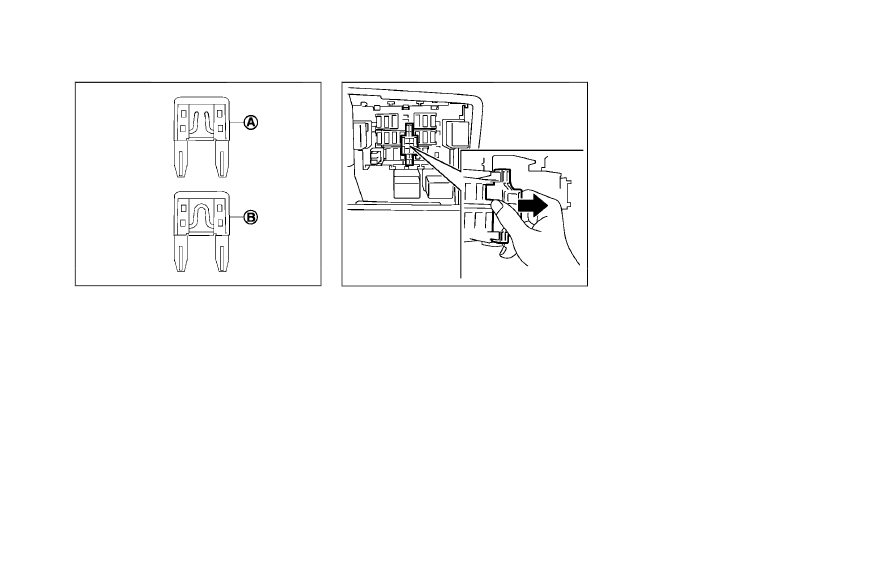Nissan Rogue Select (2015 year). Manual - part 17

SDI1753
4. If the fuse is open
*
A
, replace it with a new
fuse
*
B
.
5. If a new fuse also opens, have the electrical
system checked and repaired by a NISSAN
dealer.
JVM0089X
Extended storage fuse switch (if so
equipped)
To reduce battery drain, the extended storage
fuse switch comes from the factory switched off.
Prior to delivery of your vehicle, the switch is
pushed in (switched on) and should always
remain on.
If the extended storage fuse switch is not
pushed in (switched on), the “Shipping mode
on, Push storage fuse” warning may appear in
the vehicle information display. See “11. Ex-
tended storage fuse warning” (P.2-19).
If any electrical equipment does not operate,
remove the extended storage switch and check
for an open fuse.
NOTE:
If the extended storage fuse switch mal-
functions, or if the fuse is open, it is not
necessary to replace the switch. In this
case, remove the extended storage fuse
switch and replace it with a new fuse of the
same rating.
How to remove the extended storage fuse
switch:
1. To remove the extended storage fuse switch,
be sure the ignition switch is in the “OFF” or
“LOCK” position.
2. Be sure the headlight switch is in the “OFF”
position.
3. Remove the fuse box cover.
4. Pinch the storage fuse switch and pull it in
the direction illustrated.
Maintenance and do-it-yourself
8-21